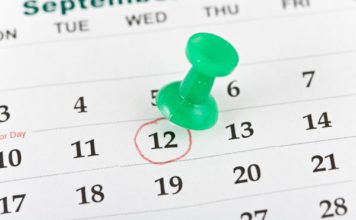Q:
After the earthquake last month, I heard a lot of people talking
about how their dog or their cat was acting strange. I remember
when someone said that animals could predict earthquakes. Has this
ever been proven?
Q:
After the earthquake last month, I heard a lot of people talking about how their dog or their cat was acting strange. I remember when someone said that animals could predict earthquakes. Has this ever been proven?
A:
This has been a topic of discussion for longer than you might think. As far back as 373 B.C., the ancient Greeks believed animals had some special sense that allowed them to foretell an earthquake or other natural event. And today, many people still suggest that animals can, indeed, help to predict when an earthquake might occur. But so far, scientific evidence has not been conclusive.
One well-known scientist, the late Charles Richter, adamantly proclaimed “No one but fools and charlatans try to predict earthquakes!” Nonetheless, there’s been a lot of interest in prediction, particularly in some studies in China in the 1970s. Here, a group reportedly predicted a large (magnitude 7.5) earthquake based partly on animal behavior. Later evaluation showed there were other factors used by these Chinese scientists to predict this large temblor in Haicheng, and animal behavior was not truly a reliable factor.
Still, the argument lives on. Jim Berkland, a geologist for Santa Clara County, declared that animals could help provide short-term warning of earthquakes. He based his theory partly on what he observed in newspaper lost and found ads. An increase in the number of ads for lost or runaway pets was one of the signs that might predict quakes. He claimed quite a few accurate predictions (including the Loma Prieta quake of 1989), but scientific studies have indicated that he also has missed on many others.
So what do you think? Let’s hear from readers on this one. Do you think your pet told you that an earthquake was imminent right before we were hit with the 5.6 temblor a few weeks ago? Let me know and I’ll print some of your answers here in a future column.
Q:
Our poodle, Jacques, likes to watch television. My friends think this is crazy, but every time I turn on the set, he goes over and sits in front of it and watches it. He really likes game shows when people clap their hands. Wheel of Fortune is his favorite. Do other dogs do this?
A:
I’ve heard a lot of people talk about their television-watching pooch, and I really do believe that some dogs are entertained by the TV. No one knows whether or not they understand any of the show they look at, but I know of one dog that loves to watch any show with animals in it.
And dogs aren’t alone here. Several cat owners have told me about their kitty’s fascination with television.
So go for it, Jacques. Whether you watch to see who goes to the bonus round spin, or just to see whether Pat’s tie matches the color of Vanna’s dress, enjoy the show.
But I’m curious. Does Jacques get up during a commercial break and go get a snack?
Q:
I know that cows have a different digestive tract that allows them to eat hay and grasses. Do horses have the same kind of digestion? Are horses different that cows?
A:
Horses eat the same roughage that cows and other ruminants enjoy. But they do it a little differently. They don’t have a four compartment stomach like cows, sheep and goats. Their stomach is a more simple, single compartment.
Instead, they have a specialized portion of their digestive tract called the cecum. This structure is similar to our appendix; it’s a dead-end pouch that comes off the digestive tract right where the small intestine connects to the large intestine.
The human cecum is small and not very active. But in horses and other cecal fermenters (rabbits, guinea pigs and a few others), the cecum is very large and contains many microorganisms that assist the digestion of hay and grass. Simple stomach animals and humans just can’t digest roughage with their very rudimentary digestive system.
How large is the cecum of a horse? It’s about 3 feet in length and 1 foot in width, spanning a large area of the right side of the horse’s abdomen. It continually contracts to mix all the food with digestive fluids. These contractions occur about every minute, and they make a lot of noise! Put your ear up to the right side of a horse, and you’ll easily hear him digesting food! With horses, a growling stomach means that the digestive tract is happy and healthy.











